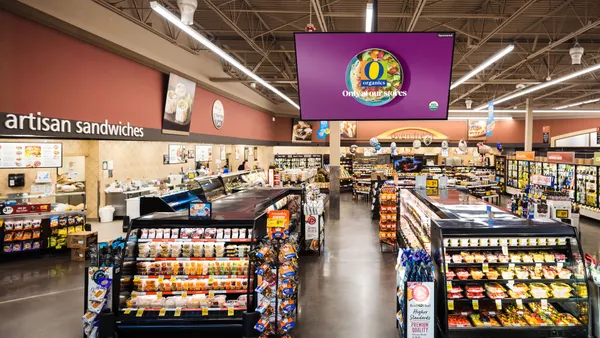Dive Brief:
- The travel industry's digital media buying will jump next year to overtake what consumer packaged goods (CPG) brands spend amid a consolidation of their ad budgets. U.S. travel-related companies will spend about $13 billion on digital media in 2020 to surpass CPG media buys of $12.8 billion, per eMarketer research shared with Marketing Dive.
- Financial services companies next year will spend $18.3 billion on digital ads, putting them ahead of the automotive industry's $18.2 billion. The retail industry will maintain its status as the biggest spender on digital ads with a 19% gain to $28.3 billion. Retailers have the highest portion of mobile ad spending in the U.S. and lead in digital video ads, per eMarketer.
- Mobile platforms are driving the expanded digital ad spending for travel and financial services companies. Travel companies put 70% of their ad budgets into mobile ads, the most of any industry group and slightly ahead of the 69% that financial services firms budget for mobile, per eMarketer.
Dive Insight:
The travel industry's digital ad growth is notable as hotels, airlines and destinations vie for the attention of younger adults who tend to use mobile devices to consume media. They also are more willing than older generations to spend heavily on travel experiences they can share on social media. About one-third (34%) of U.S. adults ages 18 to 34 said they're willing to spend more than $5,000 on upcoming vacations, the most of any age group, per a survey by travel tech firm Travelport. Accordingly, Airbnb, Google and Facebook are seeking more ad dollars from the travel industry as they add more features to compete with established online travel agencies such as Expedia and Priceline, Ad Age reported.
Meanwhile, CPG companies have worked to squeeze greater efficiencies out of their media budgets, and have eliminated digital ad spending that was determined to be wasteful. Procter & Gamble, which for years was the world's biggest advertiser, two years ago caused a stir when it cut $100 million from its digital media spending and observed no negative effect on its business. The CPG giant sought to eliminate ad placements next to objectionable user-generated content (UGC) and on sites that were prone to fake traffic from bots. This year, the company is seeing strong sales even as it continues to streamline its marketing operations.
The financial services industry's expanding digital ad spending comes as the industry seeks to reach young adults with mobile apps that help them manage their money. Banks face greater competition from fintech startups like Venmo, Credit Karma and PayPal whose apps are popular among millennials who are more comfortable than older generations with mobile banking and payments. Mobile banking has meant that many consumers routinely check in with banks every day, per app analytics firm App Annie. That's a significant change in behavior from the days when customers had to use an ATM or walk into a bank branch to get cash for everyday spending, make deposits or handle transactions.
Weakness in the automotive industry, whose sales slumped 2.4% during the first six months of the year, will be reflected in digital ad spending, eMarketer forecast. The industry also has other spending priorities.
"Automakers are also busy grappling with new technologies, shifts in consumer behaviors and stricter emission standards," Oscar Orozco, forecasting analyst at eMarketer, said in the report. "All of this is being prioritized, leading brands to pivot their focus from ad spending to research and development."









